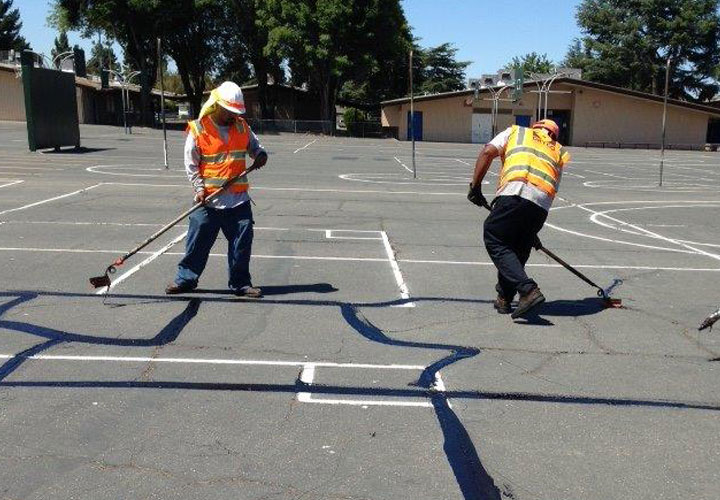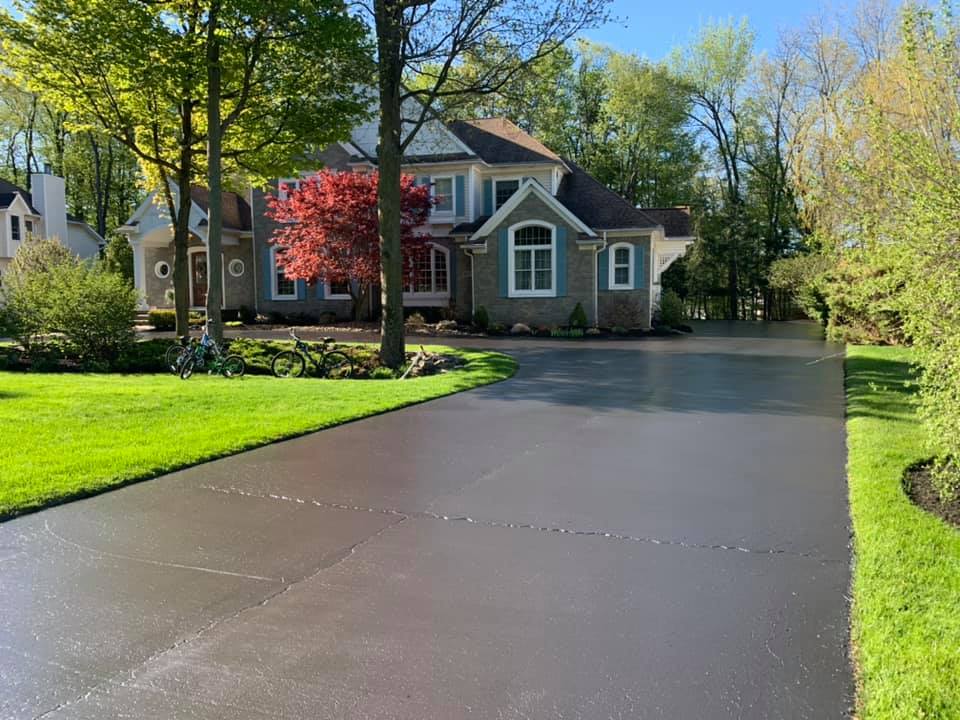Warm Mix Asphalt: A Lasting Solution for Pavement
Warm Mix Asphalt (HMA) has actually arised as a leading sustainable choice for pavement options, providing a myriad of environmental benefits and innovative technologies. Its capability to reduce and recycle products energy intake provides an engaging situation for its fostering in roadway building and construction tasks. The long-term performance and resilience of HMA make it a favored option for infrastructure advancement. As the demand for eco-friendly building practices grows, checking out the subtleties of HMA's sustainability can give valuable insights into the future of sidewalk remedies.
Environmental Benefits of Hot Mix Asphalt

Furthermore, Hot Mix Asphalt assists to minimize city heat island impacts. Its dark shade absorbs sunlight, reducing the quantity of warmth reflected back right into the environment contrasted to lighter-colored pavements. This can decrease ambient temperature levels in metropolitan locations, lowering the need for a/c and eventually decreasing power usage.
On top of that, Warm Mix Asphalt adds to improved stormwater management. Its permeable nature enables water to charge and infiltrate the sidewalk groundwater materials, minimizing overflow and the risk of flooding. These environmental advantages make Hot Mix Asphalt a lasting option for paving highways and roads.
Power Effectiveness in HMA Manufacturing
Is energy efficiency a crucial element in the manufacturing of Hot Mix Asphalt (HMA)? Power plays a substantial role in the production of HMA, affecting both price and ecological sustainability. One vital facet of energy performance in HMA production is the use of cozy mix asphalt (WMA) modern technologies.
Additionally, innovations in plant innovations have actually led to even more energy-efficient HMA manufacturing procedures. By maximizing energy use in HMA manufacturing, the market can reduce its carbon impact while preserving top notch sidewalk materials.
Recyclability of Hot Mix Asphalt
The recyclability of Hot Mix Asphalt (HMA) is an essential aspect of its sustainability and lasting environmental influence. HMA is one of the most recycled products in the United States, with over 100 million heaps of reclaimed asphalt pavement (RAP) being recycled every year in new sidewalk construction. Recycling HMA supplies numerous environmental advantages, such as lowering the need for virgin products, decreasing power consumption throughout production, and decreasing the amount of waste sent to garbage dumps.
The process of reusing HMA entails crushing the existing sidewalk, crushing it into smaller sized items, and mixing it with new aggregate and asphalt binder to create a recycled mix. Generally, the recyclability of HMA plays a substantial function in advertising lasting techniques within the pavement industry.

Long-Term Performance of HMA
Asphalt sidewalks resource show resilience and durability over a prolonged duration, showing the long-lasting efficiency of Warm Mix Asphalt (HMA) The durability of HMA can be credited to its capacity to hold up against hefty traffic loads, harsh climate condition, and the effects of aging. Studies have revealed that properly designed and properly constructed HMA pavements can last for 20 years or even more with normal upkeep. The trick to taking full advantage of the long-lasting efficiency of HMA depends on making use of top notch products, adhering to ideal techniques in construction, and executing reliable upkeep approaches. Proper drainage, routine examinations, and timely repair work are vital for protecting the structural integrity of HMA sidewalks gradually. Additionally, developments in HMA technology, such as the use of polymer-modified binders and cozy mix asphalt, have actually even more boosted the longevity and durability of HMA pavements. By focusing on high quality construction and upkeep methods, HMA continues to confirm itself as a sustainable and cost-effective remedy for lasting sidewalk facilities.

HMA: Resilience and Sustainability
Showing both toughness and sustainability, Hot Mix Asphalt (HMA) has come to be a keystone in the construction of resilient pavement frameworks - angled parking. HMA's durability stems from its capacity to stand up to heavy tons, harsh climate conditions, and high web traffic volumes, making it a trusted option for highways, highways, and airport terminal runways. The structure of HMA, which typically includes accumulations, binder, and filler, plays an important duty in web improving its long life and resistance to deterioration
Moreover, HMA's sustainability exists in its recyclability and energy-efficient manufacturing process. The capability to recycle reclaimed asphalt sidewalk (RAP) in new HMA combinations decreases the demand for virgin products and minimizes the environmental effect of sidewalk construction and maintenance. Furthermore, the power performance of producing HMA lies in its lower mixing temperature levels contrasted to other pavement materials, resulting in lowered power intake and greenhouse gas emissions.
Conclusion
To conclude, hot mix asphalt (HMA) uses a lasting remedy for sidewalk with its check these guys out eco-friendly qualities. HMA's recyclability, power performance in production, and long-lasting resilience make it an environment-friendly selection for roadway building. By conserving natural resources, decreasing waste, and reducing greenhouse gas discharges, HMA plays a vital function in promoting sustainability in facilities development. Its ability to mitigate city warmth island results additionally highlights its significance in creating resilient and eco aware pavement systems.
HMA is one of the most recycled products in the United States, with over 100 million tons of reclaimed asphalt sidewalk (RAP) being reused annually in brand-new pavement construction.The procedure of reusing HMA includes milling the existing sidewalk, crushing it into smaller sized pieces, and blending it with new aggregate and asphalt binder to develop a recycled mix.Asphalt pavements show longevity and durability over an extended duration, showing the long-lasting efficiency of Hot Mix Asphalt (HMA) Furthermore, advancements in HMA modern technology, such as the use of polymer-modified binders and cozy mix asphalt, have additionally enhanced the toughness and durability of HMA sidewalks. The ability to recycle redeemed asphalt pavement (RAP) in brand-new HMA mixtures decreases the need for virgin materials and lessens the ecological impact of sidewalk building and construction and maintenance.